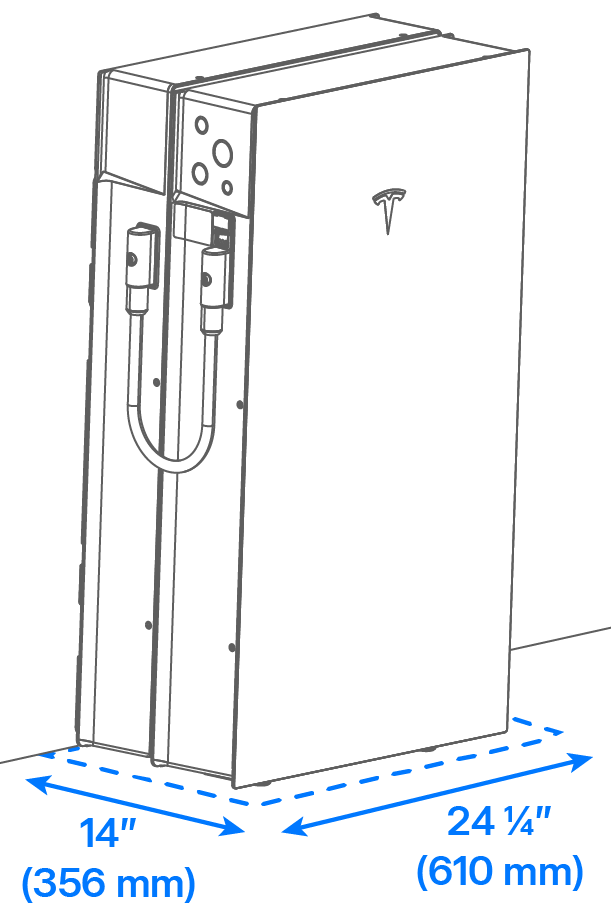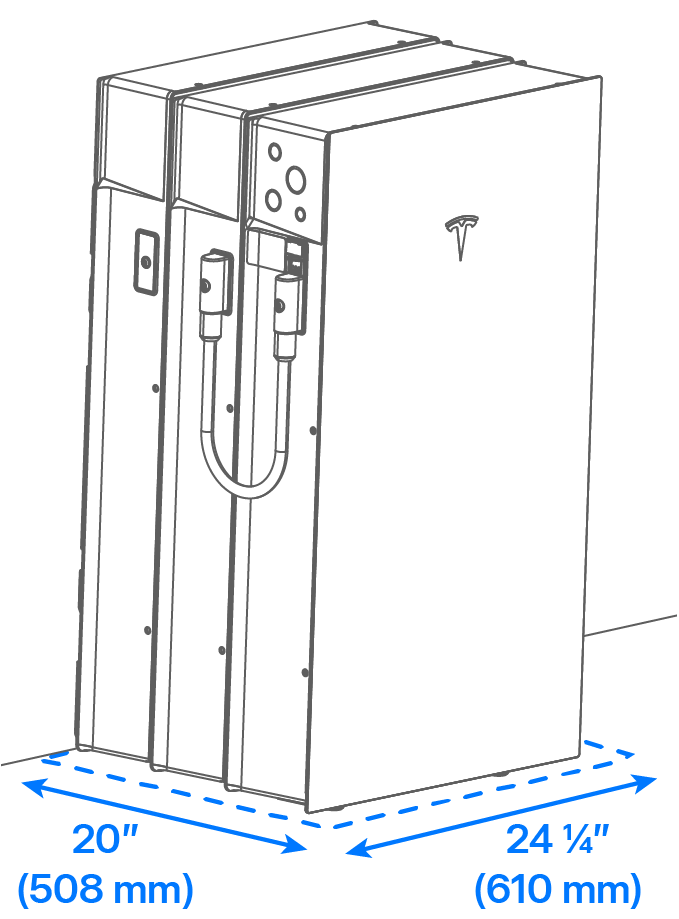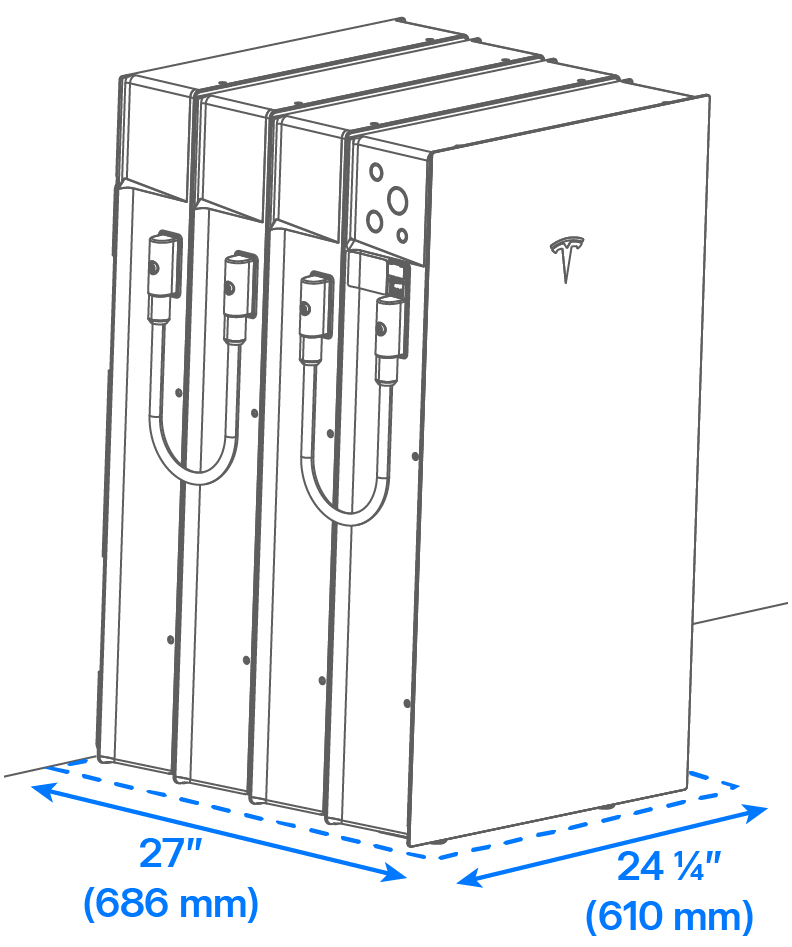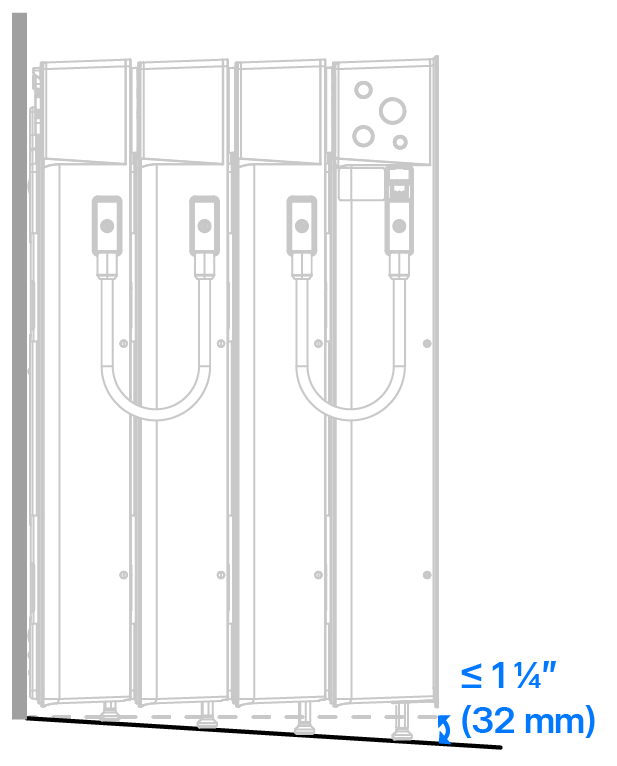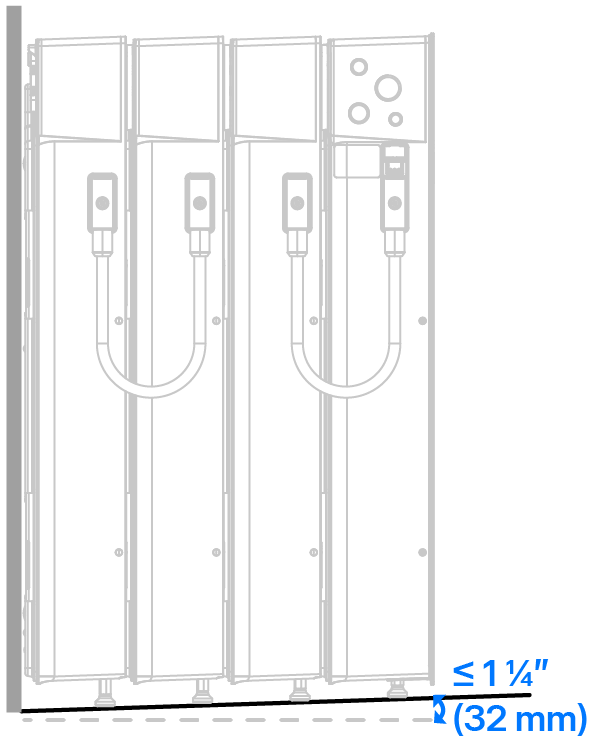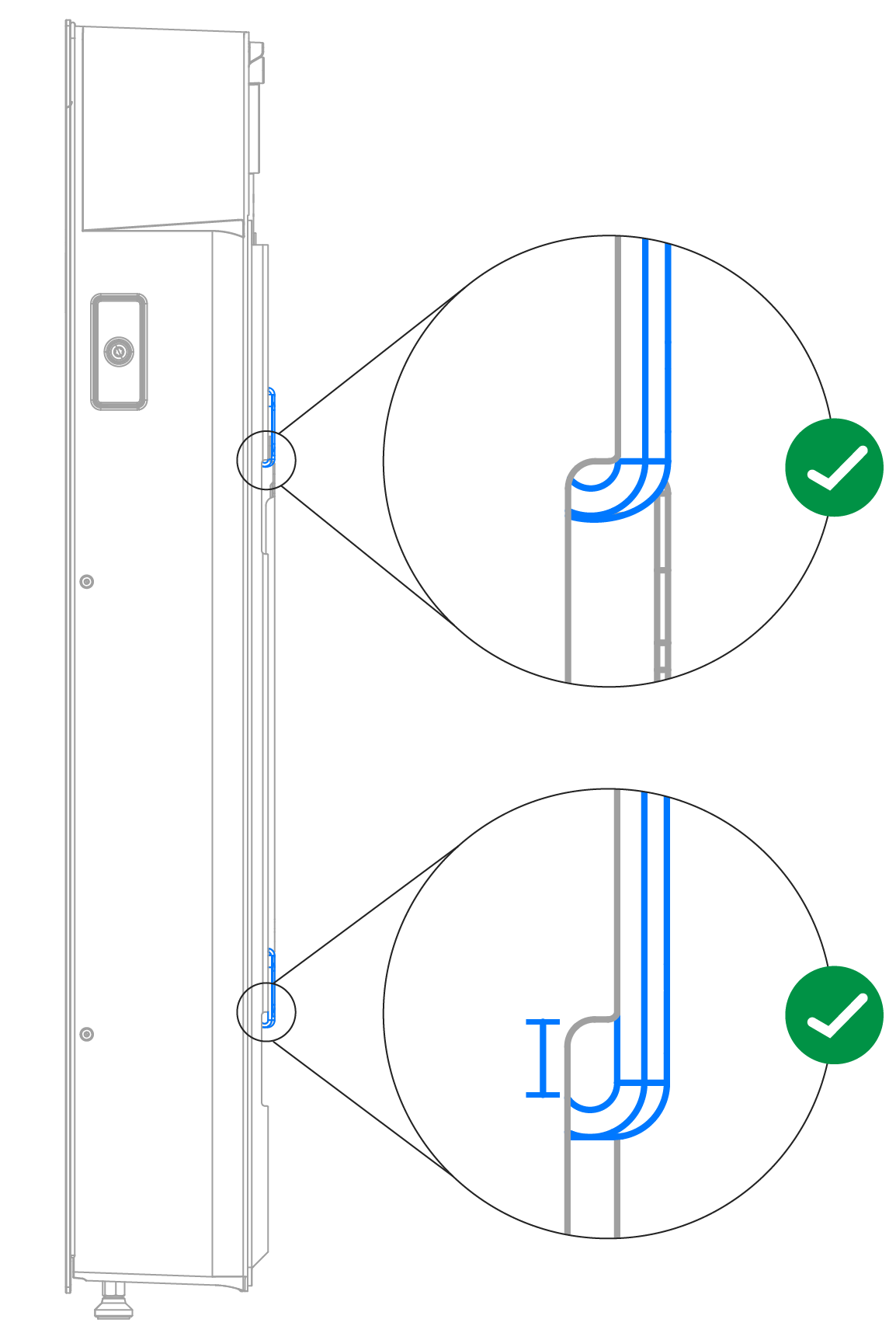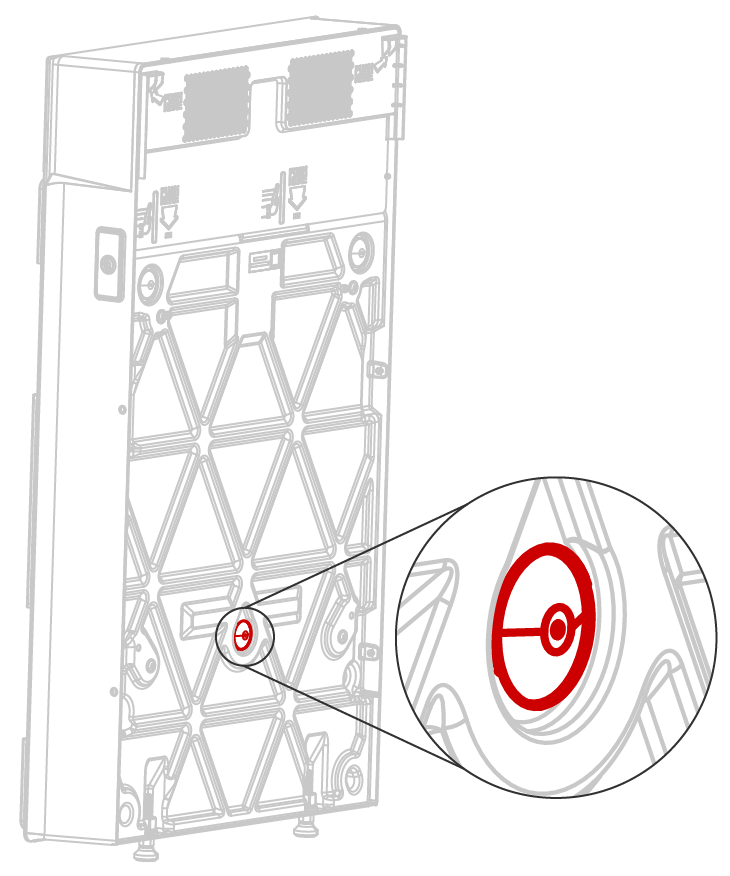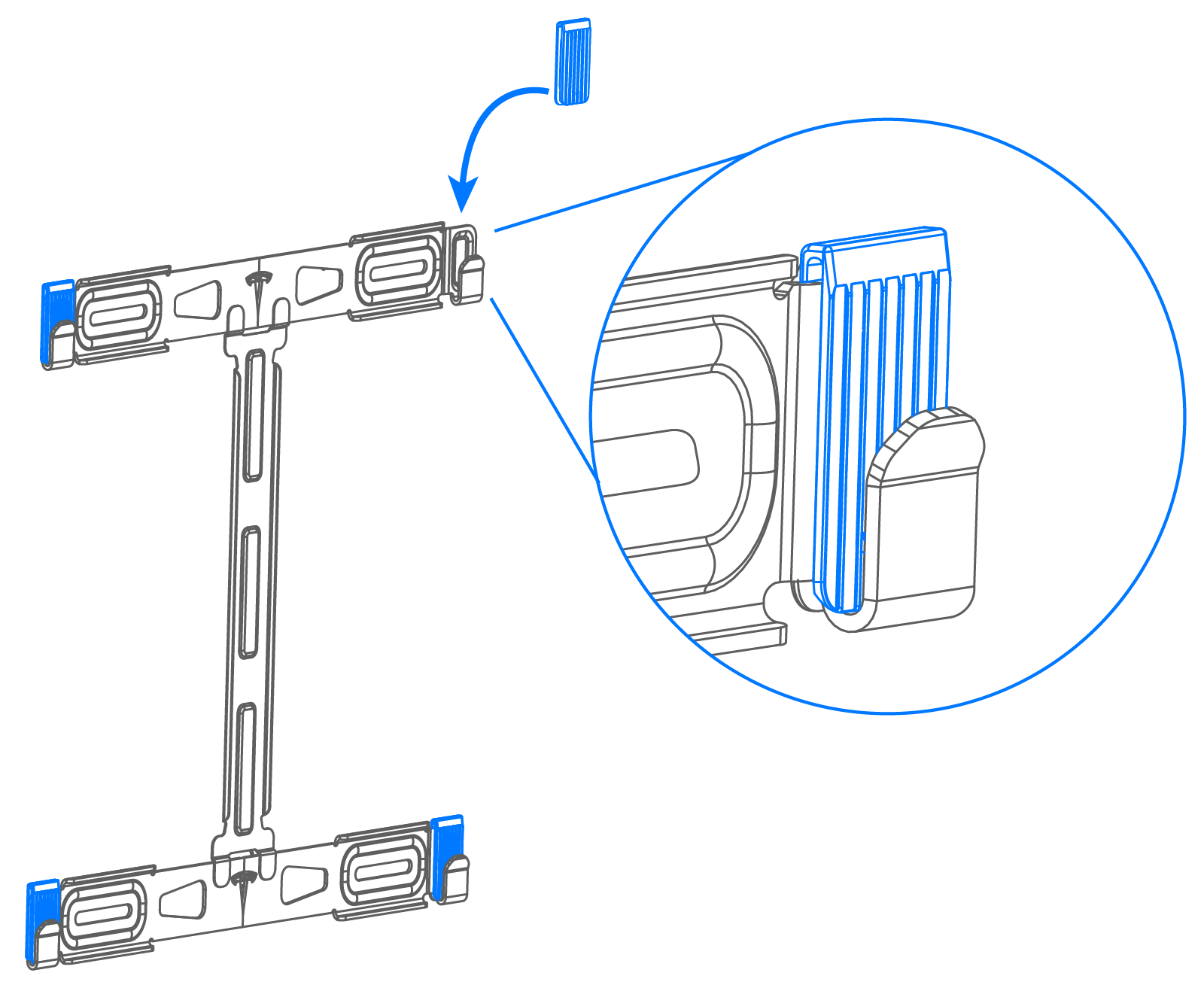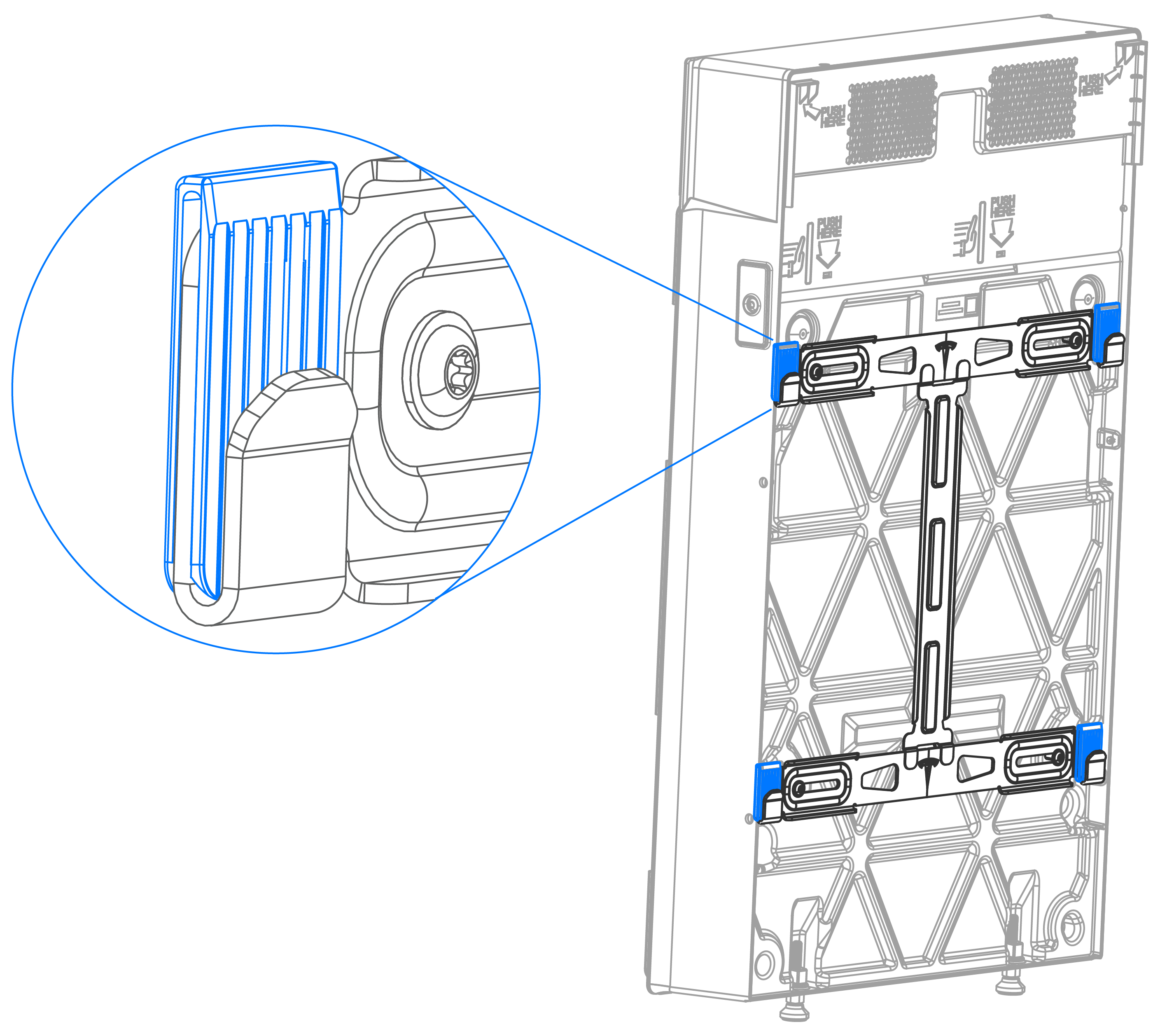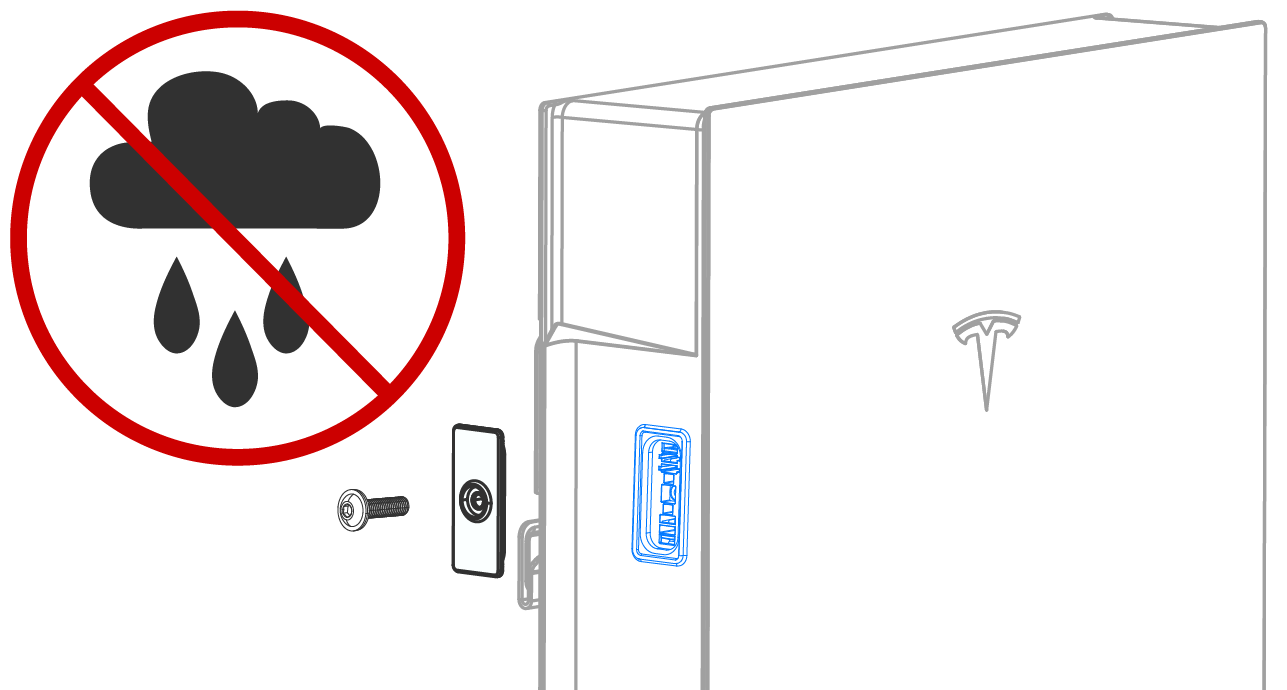Install Stacked Expansion Units
Warning
Stacked Expansion units must be ground mounted.
Do not attempt to install stacked units above ground on a bracket, or in any
configuration other than ground-mounted.
Note
Follow all Powerwall 3 guidance for choosing a
location to install Expansion units, clearance requirements,
and instructions to remove the units from packaging and transport them with the
Powerwall dolly.
- Determine where the Expansion units and Powerwall 3 will be installed based on
the number of units:
Figure 1. Expanded View of (2) Stacked Expansion Units 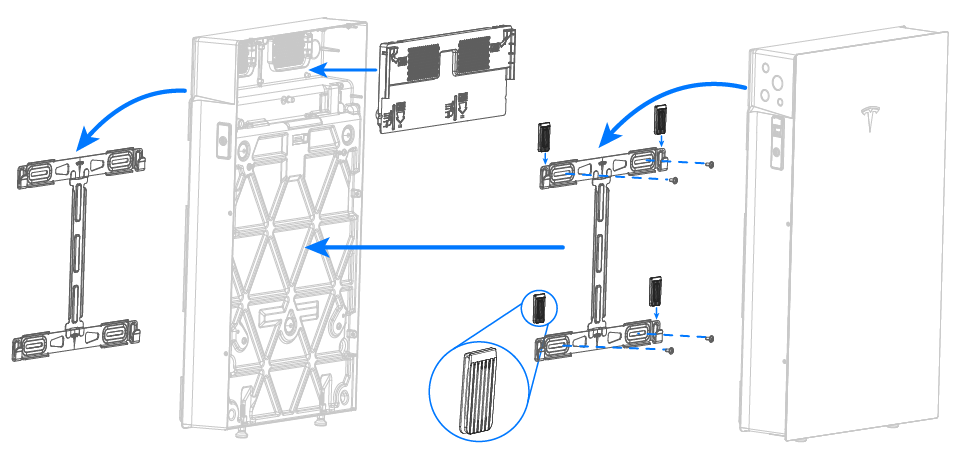 NoteWhen installing the wall bracket shims:
NoteWhen installing the wall bracket shims:- Do not install shims if the wall bracket is mounted directly to the wall
- Install shims if the wall bracket is fastened to an Expansion unit
- Depending on how many units will be stacked, confirm the minimum footprint area is available in front of where the bracket will be installed:
- Using a level, confirm the ground slope within the required footprint area (in any direction) is less than or equal to 1 ¼ inches (32 mm). If the ground slope is greater than this value, the ground slope must be corrected or the stacked configuration must be mounted in another location.
- Determine the height at which the wall bracket will be mounted:
- Identify the highest point within the required footprint area; this will
be the starting reference point for mounting the wall bracket. Determine
the difference between this point and the base of the wall. NoteFor a flat surface or a surface that slopes away from the wall, the base of the wall is the highest point.NoteAs noted in the previous step, the difference between this point and the base of the wall must be less than or equal to 1 ¼ inches (32 mm).
- For a flat surface or a
surface that slopes away from the wall, the wall bracket is mounted with the upper
row of fastener slots 30 inches (760 mm) from the base of the wall (see
Bracket
Measurements Relative to Expansion Unit and
Floor).
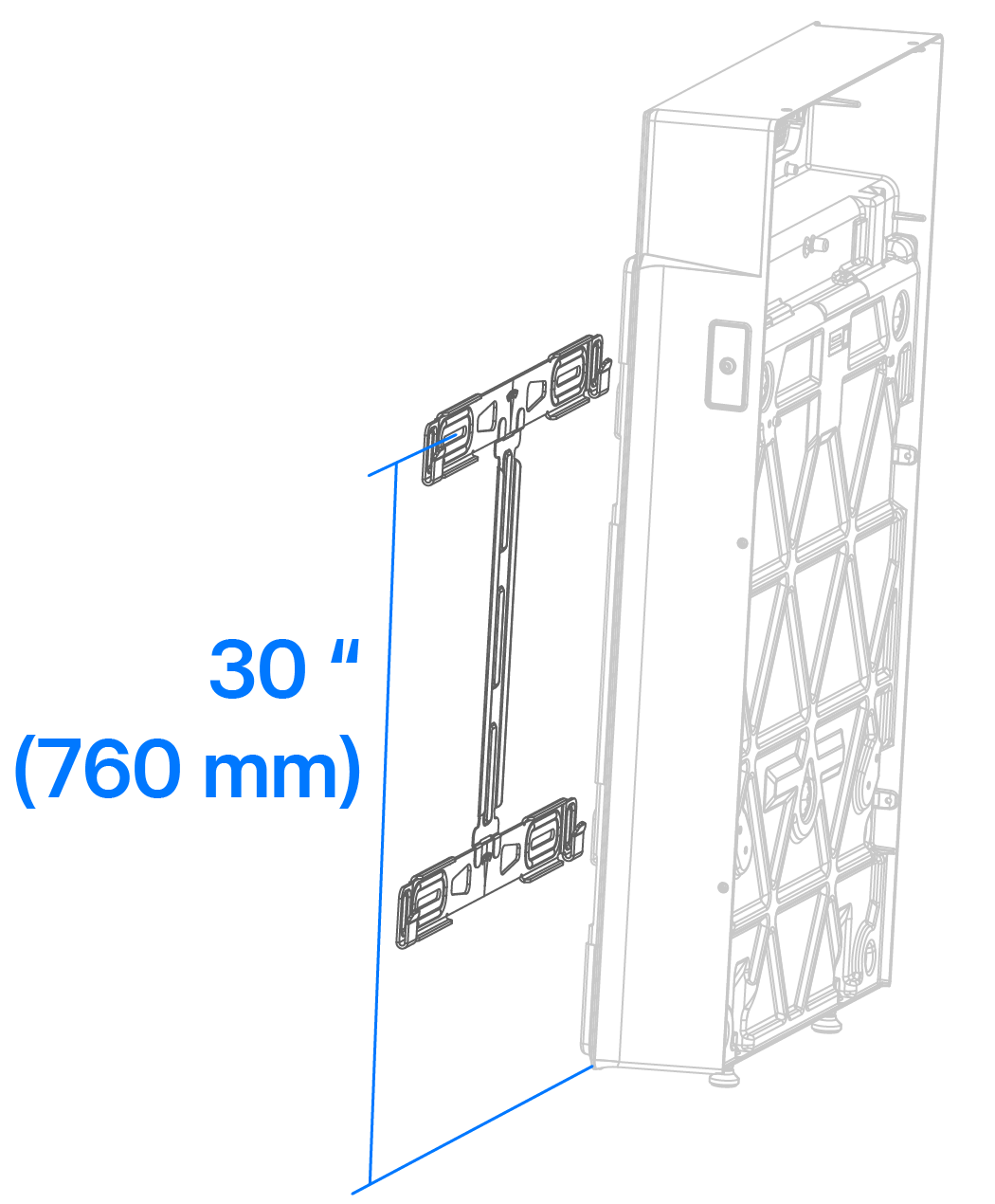
- For a surface that slopes
toward the
wall, add the difference in slope (determined in step 2.a) to the baseline 30 inches (760 mm). For instance,
if the difference between the highest point in the footprint area and
the base of the wall is 1 inch (25 mm), mount the wall bracket with the
upper row of fastener slots 31 inches (785 mm) from the base of the wall.
Wall Bracket Height for Flat Surface or Ground Sloping Away from Wall Wall Bracket Height for Ground Sloping Toward Wall WarningIt is critical that the slope of the installation area is accurately measured and the wall bracket is installed at the correct height to ensure the units can be leveled and the stacked assembly shall retain its structural integrity.- If the wall bracket is mounted too low, the units will not properly engage with the wall bracket
- If the wall bracket is mounted too high, the units will not be supported by their feet
- Identify the highest point within the required footprint area; this will
be the starting reference point for mounting the wall bracket. Determine
the difference between this point and the base of the wall.
- Safely shut the system down:
- If a System Shutdown Switch is present, push it to initiate Rapid Shutdown. If there is no System Shutdown Switch, turn the Enable switch on the Powerwall 3 to OFF.
- Open the Powerwall 3 AC circuit breaker.
- Wait 30 seconds before proceeding with any work.WarningRisk of electric shock from stored energy. Wait 30 seconds after disconnecting all sources of supply before proceeding.
- To lift and transport the Expansion unit, follow all
instructions in STEP 2: Remove Powerwall 3 from Packaging and Transport Using the Powerwall Dolly to use the Powerwall
dolly, noting where the two lift handles are connected on the Expansion (X):
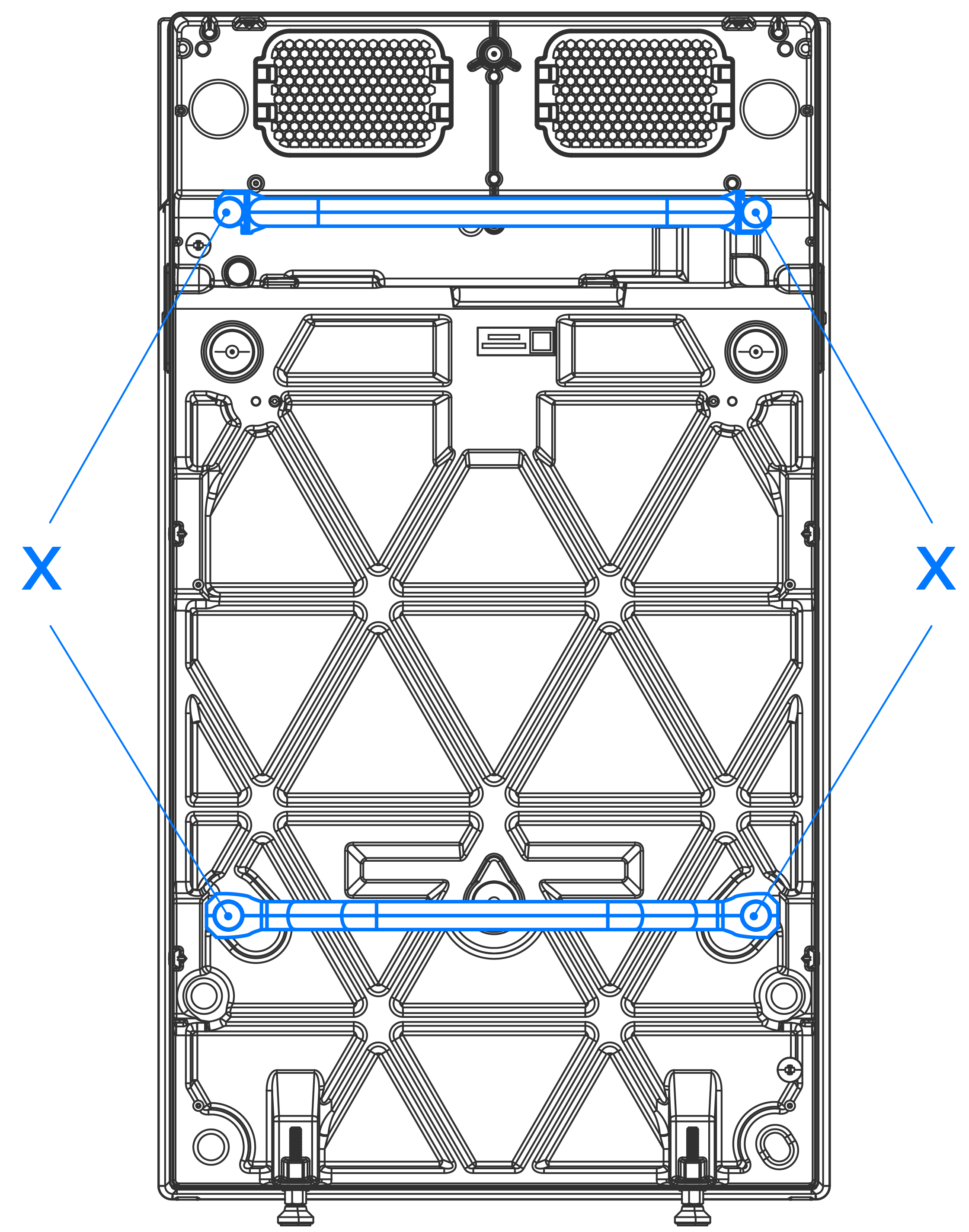
- Using a
drill and level, mount the Expansion unit bracket to the
selected wall. See Powerwall 3 Wall Bracket Anchoring Details for Wall-mounting or Ground-mounting on Approved Foundation for additional details on the type and number
of fasteners to use.WarningEnsure the Powerwall 3 wall bracket is level and plumb, especially when mounting units in a stacked configuration. Failure to do so may compromise the structural integrity of the stacked assembly.
Figure 2. Bracket Measurements Relative to Expansion Unit and Floor NoteThese bracket measurements are the same for both Expansion and Powerwall 3 units.NoteThe mounting bracket shims included in the Expansion stacking kit are not used for the unit mounted directly to the wall. The shims are only required to secure the bracket when it is being mounted to the front of an Expansion unit. - Confirm the leveling feet are screwed all the way in to the Expansion unit. This is required to ensure the unit can be adjusted once the remaining units in the stack have been installed.
- Move the dolly toward the wall,
positioning the Expansion unit so that the mounting
cleats are just above the flanges on the bracket.
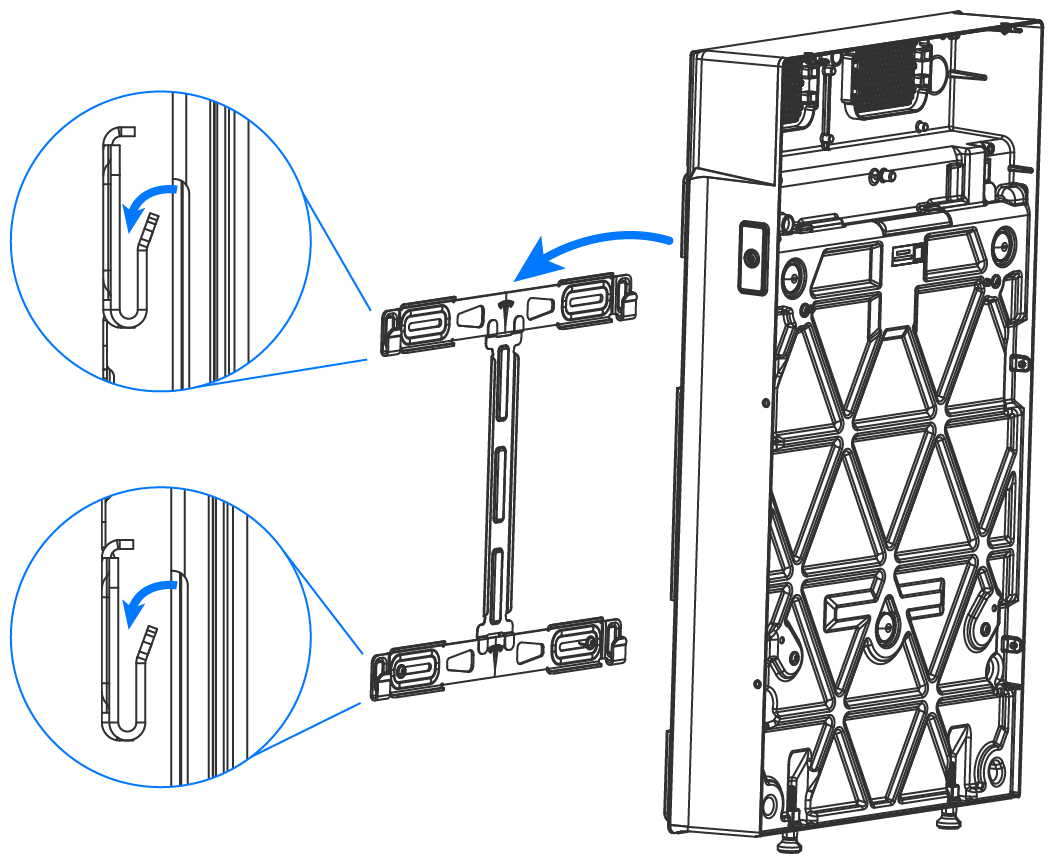
- Lower the Expansion unit until:
- The upper set of cleats is fully seated on the bracket flanges
- The lower set of cleats is engaging the bracket flanges
NoteThe mounting bracket shims included in the Expansion stacking kit are not used for the unit mounted directly to the wall. The shims are only required to secure the bracket when it is being mounted to the front of an Expansion unit. - To
install the fan front cover in the open space at the top of the enclosure, first
align the bottom of the cover with the enclosure and push it into place. With
the bottom of the cover secured, push in the top of the cover, ensuring it snaps
into place.
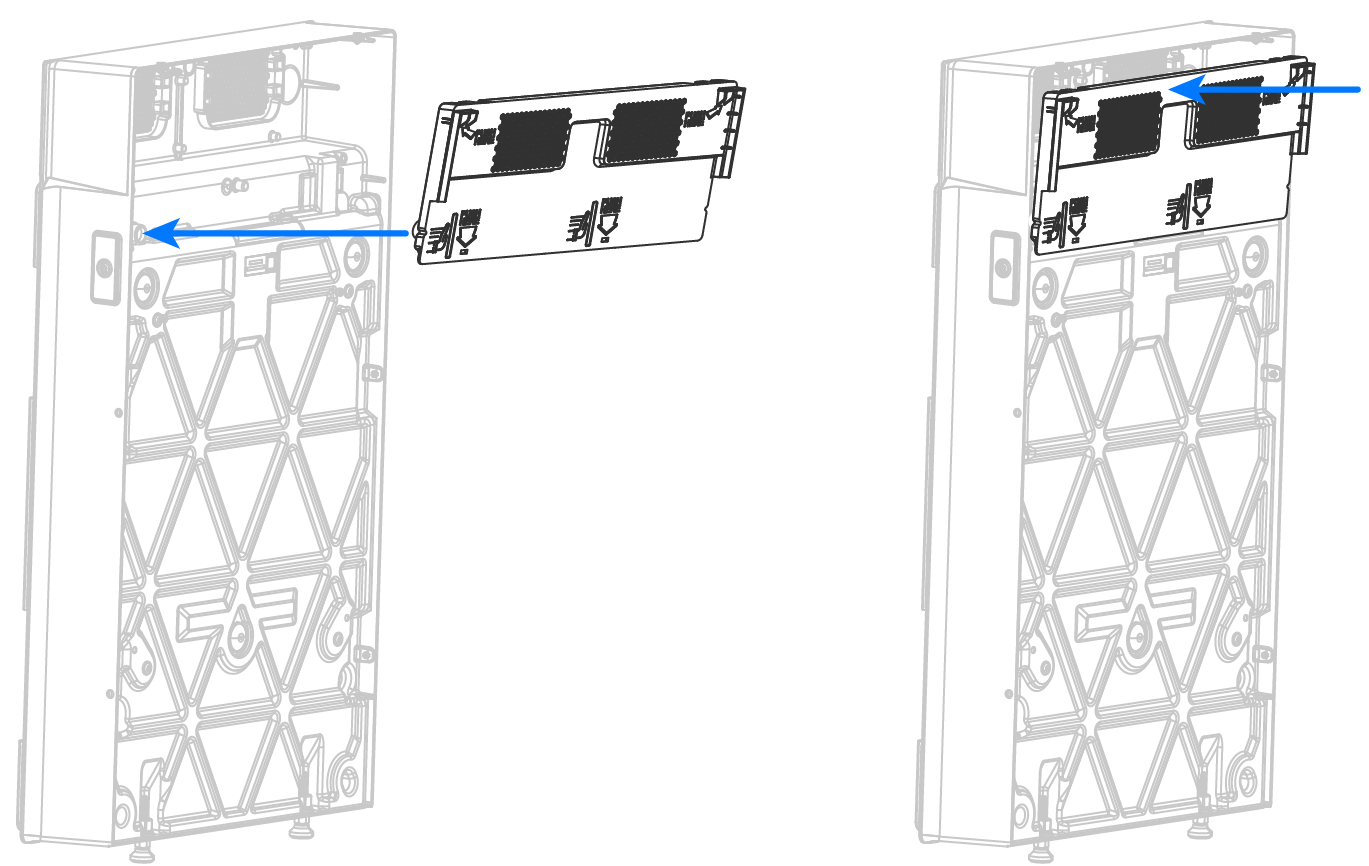
- Install
the (6X) fir tree plugs in the fastener holes on the top and sides of the enclosure.
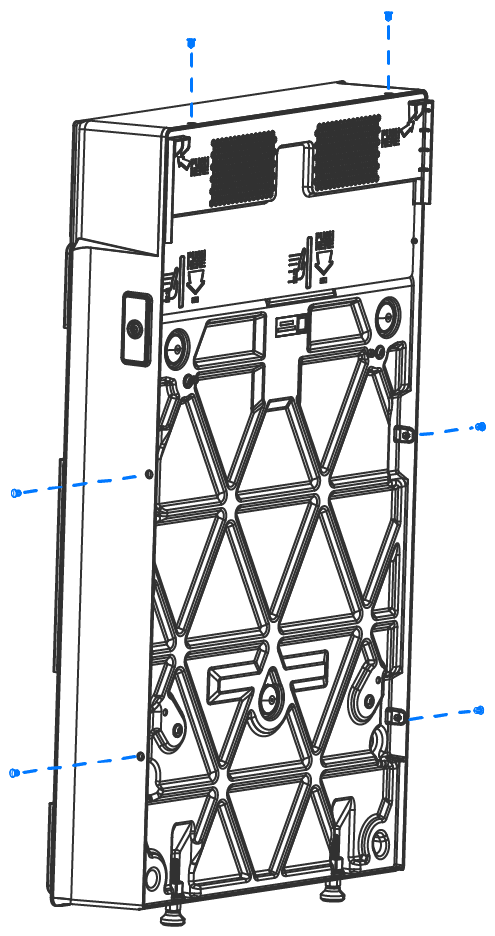
- Use an 11/16 inch (or 17 mm) wrench to adjust the leveling feet until the unit
is level. The unit should be within +/- 2 degrees in any direction.NoteThe top of each foot must be visible above the threaded boss; do not unscrew the foot so far that the top is no longer visible.
- Mount another Expansion unit to the front of the
installed Expansion unit enclosure:
- Install the (4X) bracket shims on the bracket as shown below.
- Using the (4X)
provided Torx T40 fasteners, mount the next Expansion unit bracket to
the front of the installed Expansion unit enclosure.
Torque the fasteners to 26 Nm (230 in-lb).
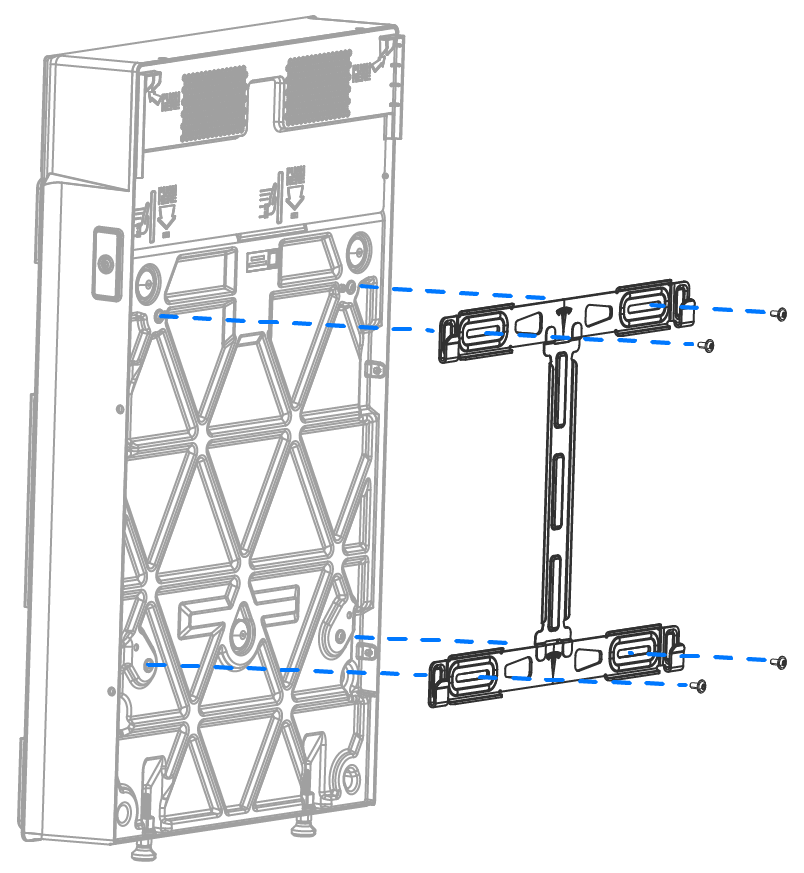
- With the next Expansion unit on the dolly, move the dolly toward the wall, positioning the unit so that the mounting cleats are just above the flanges on the bracket.
- Lower the Expansion unit until the
upper set of cleats is fully seated on the bracket flanges, and the
lower set of cleats is engaging the bracket flanges.
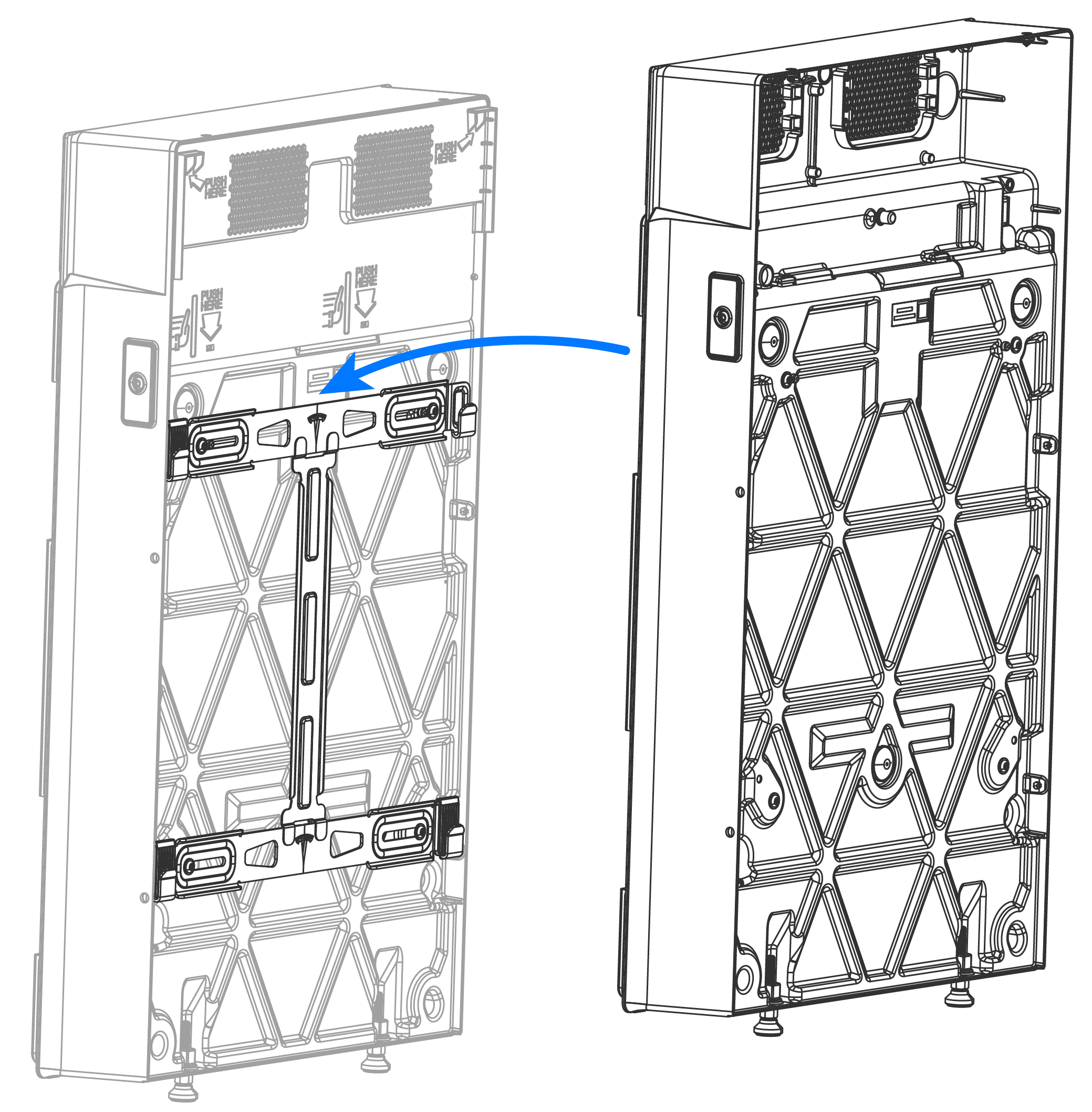
- Install the fan front cover and the (6) fir tree plugs in the fastener holes as described in steps 9 and 10.
- Use an 11/16 inch (or 17 mm) wrench to adjust the leveling feet until the unit is level. The unit should be within +/- 2 degrees in any direction. When confirming the units are level with each other, place the level on either side of the unit and balance the level on the front edge of each unit.
- Repeat step 12 for a third Expansion if present.
- Once all Expansion units have been installed, repeat step 12 to mount the Powerwall 3 to the front of the stack.
- Begin with STEP 6: Make Solar PV Connections to complete all Powerwall 3 wiring, finishing by
installing the front cover.NotePowerwall 3 must always be installed at the front of an Expansion unit stack. If the Powerwall 3 was previously installed, it must be uninstalled so that it can be moved to the front of the new stack.
- Connect the Expansion unit to the Powerwall 3 (or to another Expansion unit):
- Using a Torx T40 bit, loosen the fastener holding the Expansion port
cover.WarningSTOP. Before opening Expansion port covers: Doing so may allow water and/or debris to contact the sensitive internal components of Powerwall 3 / Expansion. This may lead to product damage and could potentially void the product warranty.
- Insert a cabinet tip screwdriver in the small slots at the top and bottom of the port cover to pry it loose. Remove the cover.
- Visually inspect the Expansion port and confirm there is no debris in the port.
- Remove the protective packaging from the end of the Expansion
Harness being plugged in.NoteThe Expansion harness with Tesla P/N 1875157-05-y must be used when connecting Expansion units in a stacked configuration.
- Visually inspect the Expansion Harness
connector and confirm there is no dirt or debris on the connector.
If there is dirt / debris on the connector:
- Clean the dirt / debris from the connector
- If it is not possible to adequately clean the connector, use a new Expansion Harness
- Plug one end of the Expansion Harness into the Expansion unit. Torque
the T40 harness screw on the connector to 100 in-lb (11 Nm).
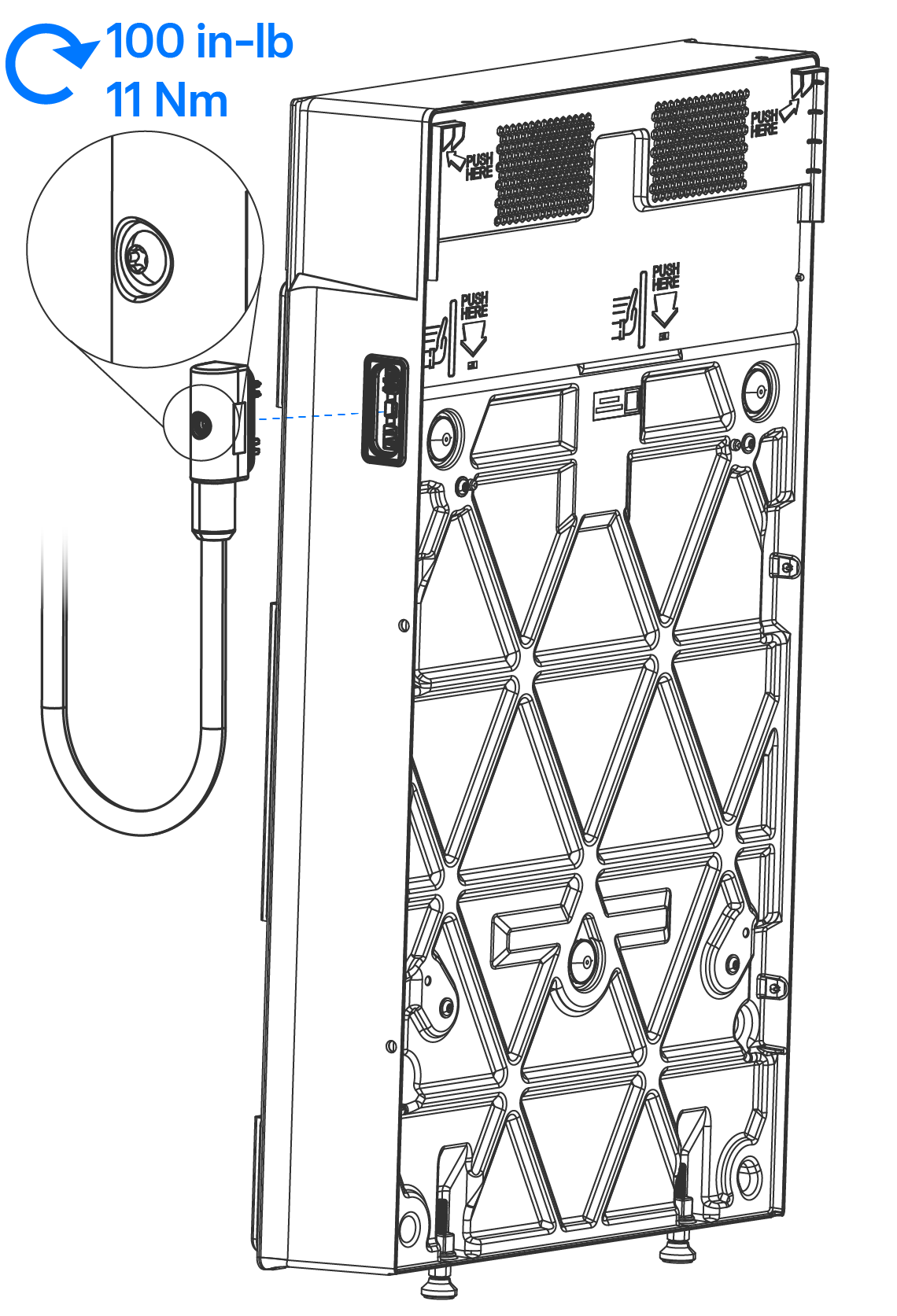
- Route the Expansion Harness to the Powerwall 3 (or other Expansion unit).
- Remove the Expansion port cover from
the Powerwall 3 (or other Expansion unit) and plug
the Expansion Harness in. Torque the T40 harness screw on the
connector to 100 in-lb (11 Nm).

- Ensure each end of
the Expansion Harness is fully seated in its port; it will be
possible to confirm the harness is fully seated when there is no
gasket exposed.
- Using a Torx T40 bit, loosen the fastener holding the Expansion port
cover.
